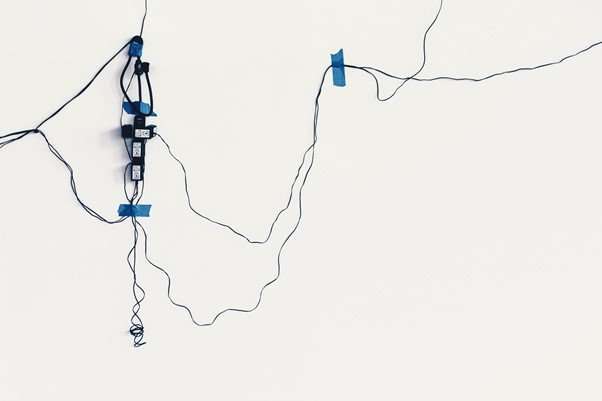The general homeowner often uses extension cords as a fast fix for various electrical issues. After all, why not? Extension cables compensate for poor outlet positioning and come in useful when putting a TV 15 yards from the closest power supply.
A tangle of wires in your workplace or entertainment area doesn’t just look bad, but it also presents a risk to you, puppies, children, and expensive electronics. Kids and dogs like to chew on extension cords, and everyone has come perilously near to tripping and falling or ripping a computer off a desk due to a stray cable.
Besides that, there are also challenges of safely and effectively connecting all your devices to your power outlets. Attempting to hide cables by shoving them under furniture or sewing them to walls is difficult, inconvenient, and nearly usually ineffective.
So how can you ensure safe usage of your power cords? Are there any methods to properly utilize these electrical wires? People have come with several hacks and ideas to manage their extension cables that keep the wire in the best of conditions without causing harm to any being. Read on to know various tricks that you can use to handle your extension cables.
How to manage your extension cords?
An extension cord is essential in various circumstances, and it may even prove to be a lifesaver. However, as necessary and helpful as they are in this instance, they may play a critical role in electrical dangers if not properly cared for. Here are five extension cable tips to help you avoid such scenarios and ensure your safety:
1. Over-under coils:
The over-under technique works with the cord’s natural curvature rather than against it, enabling it to lay comfortably. While standing motionless, use the over-under method to throw a wire in a straight direction. Then, make a loop out of it and repeat the process.
It’s a clever approach to entice passers-by while also saving time. If you’re using a strap to keep it together, you may hang the finished coil on a hook or put it in a kit or gear bag. The benefit of utilizing the extension in this manner is that it will not damage the cable, and it will be good to use again. You can also use a flat extension cord that will not require any specific management and is easy to handle.
2. The chain-link:
This method comprises of two significant steps, which are:
- To create a loop, locate the midpoint of your wire and divide it in half.
- Pull the doubled rope through the loop after that. The first ring in the chain will be formed as a result of this.
It takes a little getting accustomed to the chain-link method, but it does a fantastic job of keeping your extension cable small and portable. It may easily be hung on a wall or kept in a large bucket. However, this causes twists in the extension cord, which may prevent it from fully extending if the cable is stiff or maintained at low temperatures. Unlike an extension cable, you also can’t raise an over-under coil across a workstation in one cast.
The benefit of this technique is that the cable is left in a usable condition, but the drawback is that it takes experience and may twist the cord in the long term.
3. The wood trick:
For this method, you need a piece of wood or timber. First, take a chunk of wood from leftover timber or chipboard for small to medium-sized extension cables. Then, do a couple of scoop notches on each side of your wood. That is all it takes to create a reel. You could also round the edges, but this isn’t required if you have edges in your cable.
There are some aspects of these reels that you can like. It’s simpler to prevent a rat’s nest of unwanted cables if you unwind the quantity of cord you need. They’re excellent for storage, fitting neatly in a container or on a rack, and they’re simple enough for even the most inexperienced employee to figure out. If you’re making one for a lengthy cord, lengthen the loop rather than make substantial scoop incisions at the end. When operating a high load constantly, you must be cautious of heat build-up, as with all reels.
4. Wrapping cords quickly
This method can help you wrap your extension cable fast and effectively:
- Grab both ends of the cable and begin winding it into beach ball-sized loops.
- When you get close to the finish, wrap the last loop around the coiled cord’s center and slide it through to form a tiny circle.
Many professionals like this technique since it is quick and allows you to hang many cables from a single hook. When you’re in a rush to pack up and go home before your supper gets cold, give it a try.
5. Extension cord reels with mounts:
Mounting an electrical cord on a retractable cable reel in a convenient place, such as your workspace or basement, may be a brilliant idea. It’s the easiest method to keep your cord on backup on all occasions, and putting the extension cable away is just as easy. However, some cable spools come with too small cables for their size and shape or with a convenient multi-outlet but are easy to overrun, posing a fire hazard.
In addition, if your cable breaks or fades out, you won’t be able to replace it within the reel easily. The benefit of utilizing extension cords in this manner is that the wire is in a usable condition.
In conclusion
With the tips and techniques below, you’ll have your electrical cords arranged, and wire tangling will be a thing of the past. Also, keep in mind that overpowering your cables may result in fire danger. Therefore, use your cords carefully whenever working on heavy machinery.




